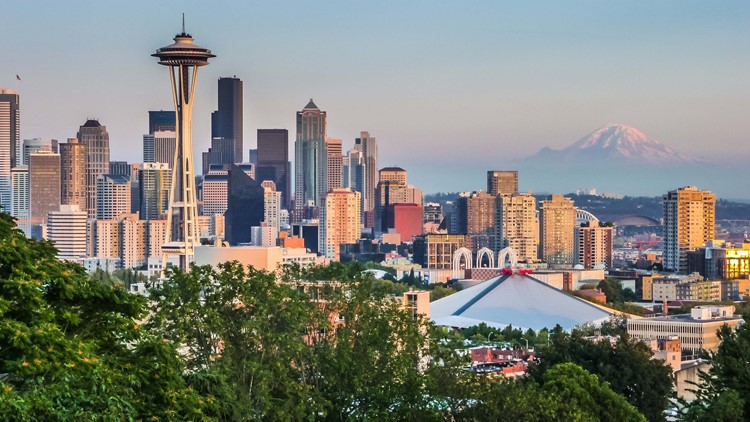Minimum wage in Seattle is soaring to $16 per hour in 2019 for the city's largest employers. The wage increase affects companies with more than 500 workers worldwide.
Companies with less than 500 employees will pay at least $15 per hour as of January 1. According to Seattle's Office of Labor Standards, "Small employers can meet this requirement by paying no less than $12.00 per hour in wages and contributing at least $3.00 per hour toward an employee's medical benefits and/or reported tips."
Statewide, Washington's minimum wage increases to $12 per hour in 2019, up from $11.50 in 2018. The state minimum wage will rise again to $13.50 per hour in 2020, as part of Initiative 1433.
Seattle's new minimum wage is more than double the federal minimum of $7.25 per hour, a rate that went into effect in 2009.
Seattle, the fastest-growing large city in the U.S., has been at the forefront of the movement for higher minimum wages. A local ordinance raised the minimum wage to as much as $11 an hour in 2015, then as much as $13 in 2016, depending on the size of the employer and whether it provided health insurance.
A series of studies by the University of Washington has produced evolving conclusions.
In May, the researchers determined that Seattle's initial increase to $11 an hour had an insignificant effect on employment but that the hike to $13 an hour resulted in "a large drop in employment." They said the higher minimum wage led to a 6.9 percent decline in the hours worked for those earning under $19 an hour, resulting in a net reduction in paychecks.
In October, however, those same researchers reached a contrasting conclusion. They said Seattle workers employed at low wages experienced a modest reduction in hours worked after the minimum wage increased, but nonetheless saw a net increase in average pretax earnings of $10 a week. That gain generally went to those who already had been working more hours while those who had been working less saw no significant change in their overall earnings.
Both supporters and opponents of higher minimum wages have pointed to the Seattle studies.
The federal minimum wage was last raised in 2009. Since then, 29 states, the District of Columbia and dozens of other cities and counties have set minimum wages above the federal floor. Some have repeatedly raised their rates.
"The federal minimum wage has really become irrelevant," said Michael Saltsman, managing director of the Employment Policies Institute, a Washington, D.C.-based group that receives funding from businesses and opposes minimum wage increases.
The new state minimum wage laws could affect about 5.3 million workers who are currently earning less than the new standards, according to the liberal-leaning Economic Policy Institute, based in Washington, D.C. That equates to almost 8 percent of the workforce in those 20 states but doesn't account for additional minimum wage increases in some cities.
Advocates credit the trend toward higher minimum wages to the "Fight for $15," a national movement that has used protests and rallies to push for higher wages for workers in fast food, child care, airlines and other sectors.
"It may not have motivated every lawmaker to agree that we should go to $15," said David Cooper, senior economic analyst at the Economic Policy Institute. "But it's motivated many of them to accept that we need higher minimum wages than we currently have in much of the country."
Associated Press author David A. Lieb contributed to this report.



